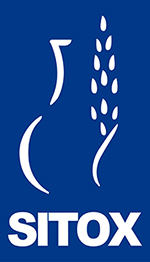Thyroid storm without precipitating factors in a previous healthy child: A case report

Accepted: 11 January 2022
All claims expressed in this article are solely those of the authors and do not necessarily represent those of their affiliated organizations, or those of the publisher, the editors and the reviewers. Any product that may be evaluated in this article or claim that may be made by its manufacturer is not guaranteed or endorsed by the publisher.
Authors
The Thyroid Storm (TS) is the severest form of thyrotoxicosis and is associated with a high mortality rate. TS presents with fever, tachycardia, gastrointestinal symptoms, and central nervous system dysfunction and may be overlooked if patients do not present thyrotoxic symptoms or have precipitating factors. We reported a pediatric case of TS with mild proptosis but no obvious precipitating factors in a previously healthy child. A 9-year-old, female patient with a history of attention-deficit hyperactivity disorder presented with the complaint of frequent vomiting. She was alert but lethargic with fever and tachycardia. Physical examination was unremarkable except for coolness in the extremities and a delayed capillary refill time of two seconds. Fluid resuscitation was ineffective in alleviating the tachycardia. Additional history-taking revealed a one-month history of mild proptosis but no other thyrotoxic findings or precipitating factors were found. Markedly elevated thyroxine and triiodothyronine and suppressed thyroid-stimulating hormone on thyroid function tests led to a diagnosis of TS. Methimazole, potassium iodine, bisoprolol, and hydrocortisone were administered. Her vital signs and thyroid functions gradually improved, and she was discharged 18 days after admission without any serious complications. She is currently euthyroid and clinically stable on 5 mg of methimazole at three months after admission. When tachycardia that is resistant to usual resuscitation is found, careful history-taking and physical examination targeting thyroid disorders should be performed to assess for TS.
How to Cite
PAGEPress has chosen to apply the Creative Commons Attribution NonCommercial 4.0 International License (CC BY-NC 4.0) to all manuscripts to be published.

 https://doi.org/10.4081/ecj.2022.10165
https://doi.org/10.4081/ecj.2022.10165








